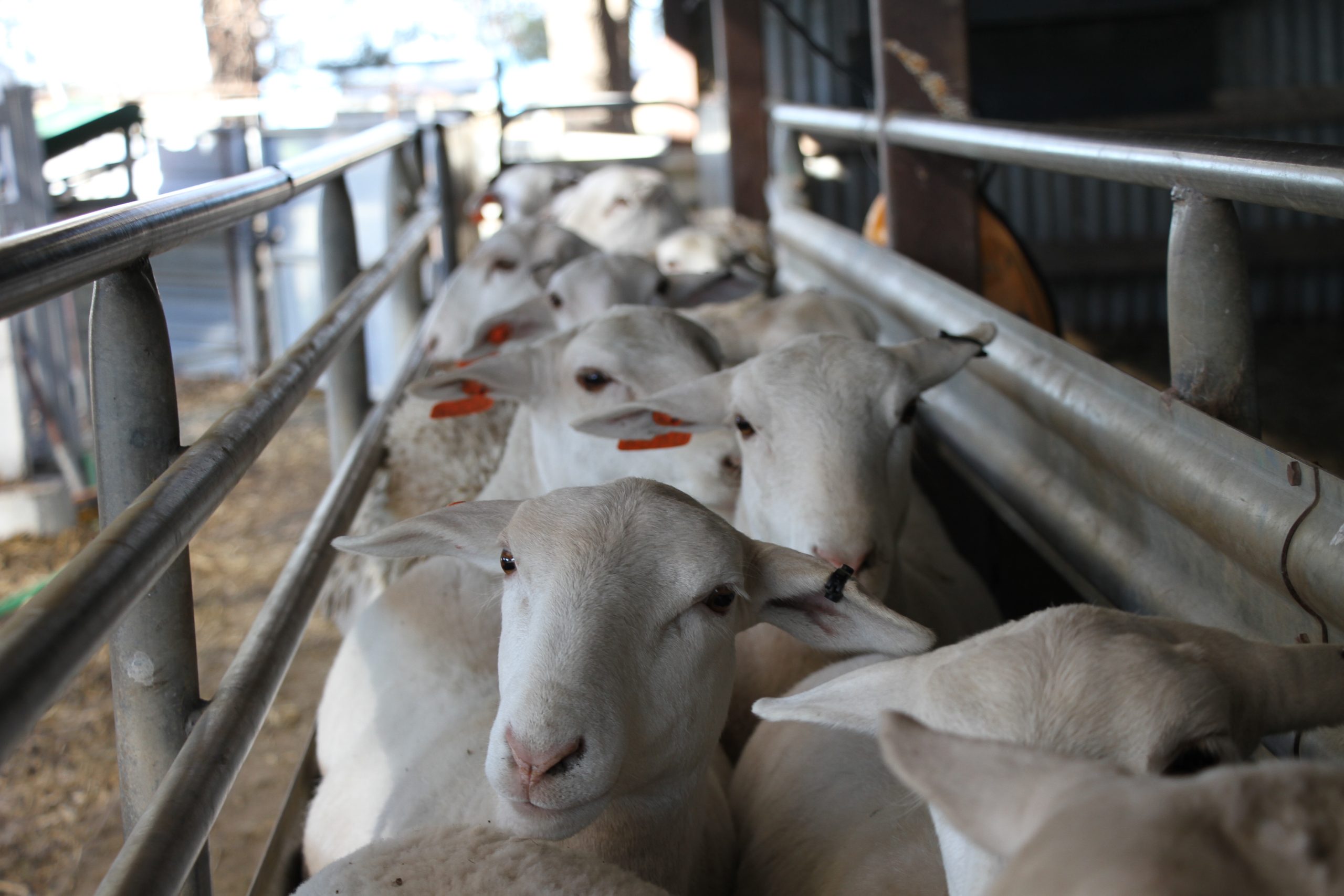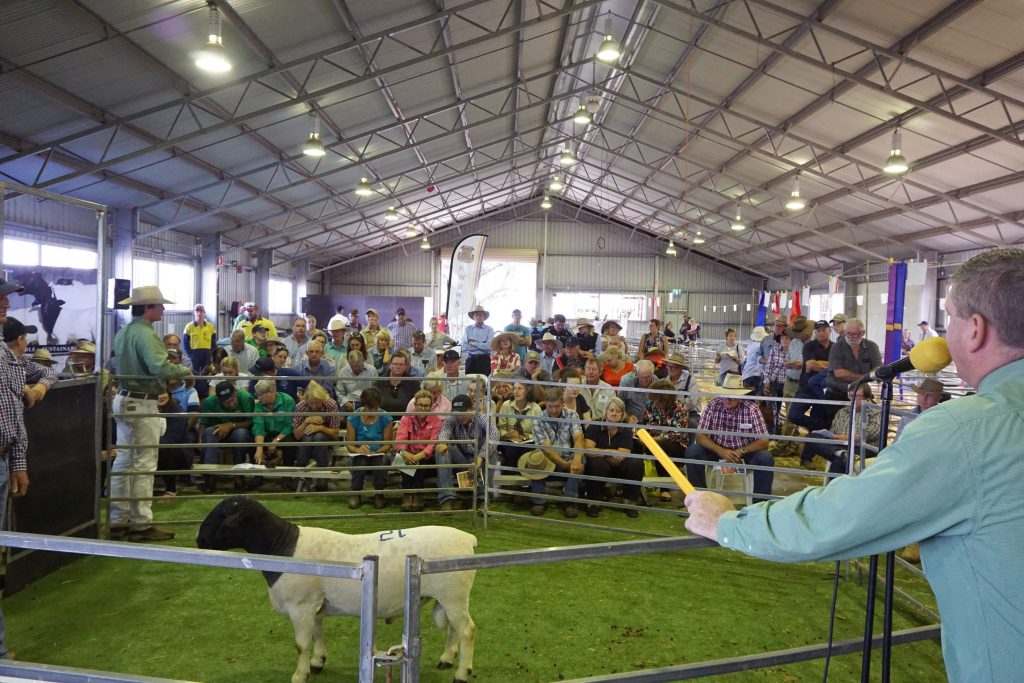
The Dorper breed continued to dominate Australia’s meat sheep market in 2022, with a strong selling season on the back of optimum seasonal conditions.
The breed’s strong performance through Queensland, NSW, Victoria and South Australia saw record averages for on-property sales.
Record selling year
John Settree, Divisional Livestock Manager, Nutrien Dubbo, said on-property sale prices in the breed were up to 30 per cent better than 2021.
“We had good clearance and good average prices due to a number of factors,” Mr Settree said.
“There was good representation of animals by stud masters who have also been able to concentrate on genetic work, thanks to some strong seasons.
“We’ve had above average rainfall across the eastern seaboard and a strong sheep and lamb market, still in the rebuilding phase after the drought.”
Mr Settree nominated a number of highlights in the sales ring for the Dorper breed, including Amarula Dorper which set a new stud record when its three-year-old ram sold under the hammer for $45,000.
Burrawang Dorper and White Dorper Stud made headlines when it sold a white Dorper ram for $62,000 in April this year, while Etiwanda White Dorpers also achieved a record on-property average.
“The stud sales would be the best in anyone’s timeframe, be in the last 20 years as an agent or 70 years as a producer,” Mr Settree said.
“I haven’t seen as strong and solid a season in what we have just experienced in my 16 years as a selling agent.”
King of the shedding breeds
While the Dorper breed has always been well known for its hardiness and ability to thrive in regions with low rainfall, bumper seasonal conditions have enabled the Dorper to showcase their value in good times.
Mr Settree said the breed’s popularity was due to a number of factors.
“I take more phone calls about Dorpers than any of the other shedding breeds,” Mr Settree said.
“Dorpers are the most popular breed in terms of shedding sheep.
“They’ve been here the longest and have a track record performing consistently in both semi-arid and arid areas and everywhere in between.
“We saw through the dry times between 2017 to 2019, the Dorpers hung on well. People could still turn off a drop of lambs and hit market specifications.
“Ewes got back in lamb and produced off-spring going forward that were hardy and survived.
“The last two to three years of good seasons have allowed the Dorpers to show more of what they have been able to achieve with some good feed in front of them.
“It’s good to see them hitting their potential – stud breeders must take some credit. They have been able to change their sheep over the last 10 years to hit more markets and more specifications and that means a bigger carcass.
“Dorpers certainly do the 16-20kg carcass easily but we are now seeing them do 24kg and heavier – they have evolved into the king of the shedding breed.”

Overseas interest
Angus Grieve, General Manager, ABL Exports, Brisbane, said his company fielded regular export enquiries for younger Dorper ewes, weighing less than 45kg.
“The majority of the enquiries are for well-marked commercial Dorper ewes weighing around 35kg, with a strong preference for the traditional Dorper variety as opposed to the White Dorpers,” Mr Grieve said.
“Most of the enquiries and executed jobs have come from southeast Asia, predominantly Malaysia where I believe some 3000 to 4000 Dorper ewes were exported this past year.
“There is some interest and smaller shipments from other markets like the Philippines and Indonesia.”
Mr Grieve said future demand would largely depend on the development of farming enterprises in the export countries and food security initiatives from importing country governments.
He said any producer wanting to target the export market should seek advice from a licensed exporter.
Looking ahead
While the 2023 market will largely depend on seasonal conditions there are strong indications that the current market demand and prices will continue.
“Now that the Australian sheep flock has built up to pre-drought numbers, more rams are needed and more sheep are needed for breeding replacement ewes,” Mr Settree said.
“Good quality studs will still be rewarded over the course of the next 12 months or so.
“The sheep and lamb market may ease slightly, mostly due to the fact that there is going to be more of them. It becomes an issue of supply and demand.
“As producers are focused on buying better sheep and better genetics to improve their flocks, the stud masters have done the same thing.”
Article by Lea Coglan (on behalf of Stud Stock Marketing) for the DSSA

